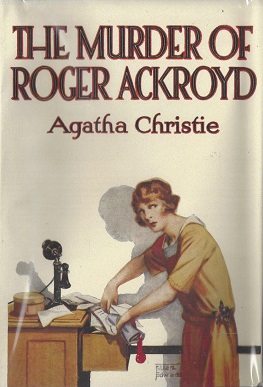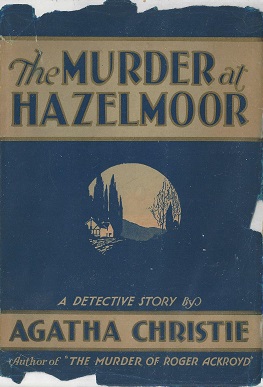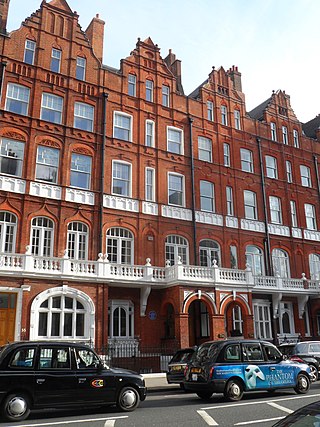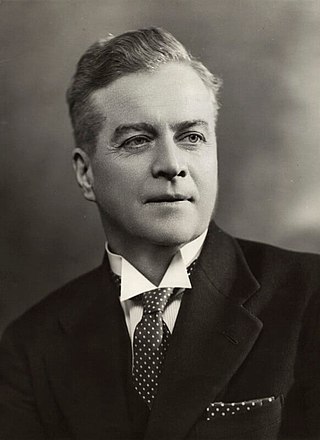
Dame Agatha Mary Clarissa Christie, Lady Mallowan, was an English writer known for her 66 detective novels and 14 short story collections, particularly those revolving around fictional detectives Hercule Poirot and Miss Marple. She also wrote the world's longest-running play, the murder mystery The Mousetrap, which has been performed in the West End of London since 1952. A writer during the "Golden Age of Detective Fiction", Christie has been called the "Queen of Crime". She also wrote six novels under the pseudonym Mary Westmacott. In 1971, she was made a Dame (DBE) by Queen Elizabeth II for her contributions to literature. Guinness World Records lists Christie as the best-selling fiction writer of all time, her novels having sold more than two billion copies.

Sleeping Murder: Miss Marple's Last Case is a work of detective fiction by Agatha Christie and first published in the UK by the Collins Crime Club in October 1976 and in the US by Dodd, Mead and Company later in the same year. The UK edition retailed for £3.50 and the US edition for $7.95.

The Murder of Roger Ackroyd is a detective novel by the British writer Agatha Christie, her third to feature Hercule Poirot as the lead detective. The novel was published in the UK in June 1926 by William Collins, Sons, having previously been serialised as Who Killed Ackroyd? between July and September 1925 in the London Evening News. An American edition by Dodd, Mead and Company followed in 1926.

The Secret Adversary is the second published detective fiction novel by British writer Agatha Christie, first published in January 1922 in the United Kingdom by The Bodley Head and in the United States by Dodd, Mead and Company later in that same year. The UK edition retailed at seven shillings and sixpence (7/6) and the US edition at $1.75.

The Hollow is a work of detective fiction by British writer Agatha Christie, first published in the United States by Dodd, Mead & Co. in 1946 and in the United Kingdom by the Collins Crime Club in November of the same year. The US edition retailed at $2.50 and the UK edition at eight shillings and sixpence (8/6). A paperback edition in the US by Dell Books in 1954 changed the title to Murder after Hours.

Sad Cypress is a work of detective fiction by British writer Agatha Christie, first published in the UK by the Collins Crime Club in March 1940 and in the US by Dodd, Mead and Company later in the same year. The UK edition retailed at eight shillings and threepence (8/3) – the first price rise for a UK Christie edition since her 1921 debut – and the US edition retailed at $2.00.

The Sittaford Mystery is a work of detective fiction by British writer Agatha Christie, first published in the US by Dodd, Mead and Company in 1931 under the title of The Murder at Hazelmoor and in UK by the Collins Crime Club on 7 September of the same year under Christie's original title. It is the first Christie novel to be given a different title for the US market. The US edition retailed at $2.00 and the UK edition at seven shillings and sixpence (7/6).

Three Act Tragedy is a work of detective fiction by British writer Agatha Christie, first published in the United States by Dodd, Mead and Company in 1934 under the title Murder in Three Acts and in the UK by the Collins Crime Club in January 1935 under Christie's original title. The US edition retailed at $2.00 and the UK edition at seven shillings and sixpence (7/6).

Why Didn't They Ask Evans? is a work of detective fiction by Agatha Christie, first published in the United Kingdom by the Collins Crime Club in September 1934 and in the United States by Dodd, Mead and Company in 1935 under the title of The Boomerang Clue. The UK edition retailed at seven shillings and sixpence (7/6) and the US edition at $2.00.

Taken at the Flood is a work of detective fiction by British writer Agatha Christie, first published in the US by Dodd, Mead and Company in March 1948 under the title of There is a Tide. .. and in the UK by the Collins Crime Club in the November of the same year under Christie's original title. The US edition retailed at $2.50 and the UK edition at eight shillings and sixpence (8/6). It features her famous Belgian detective, Hercule Poirot, and is set in 1946.

By the Pricking of My Thumbs is a work of detective fiction by Agatha Christie and first published in the UK by the Collins Crime Club in November 1968 and in the US by Dodd, Mead and Company later in the same year. The UK edition retailed at twenty-one shillings (21/-) and the US edition at $4.95. It features her detectives Tommy and Tuppence Beresford.

The Citadel is a 1983 BBC television adaptation written by Don Shaw from A. J. Cronin's 1937 novel The Citadel. It was produced by Ken Riddington. The drama was directed by Peter Jefferies and Mike Vardy.

Alibi is a 1928 play by Michael Morton based on The Murder of Roger Ackroyd, a 1926 novel by British crime writer Agatha Christie.

Three Blind Mice and Other Stories is a collection of short stories written by Agatha Christie, first published in the US by Dodd, Mead and Company in 1950. The first edition retailed at $2.50.

Witness for the Prosecution is a play adapted by Agatha Christie from her 1925 short story "Traitor's Hands". The play opened in London on 28 October 1953 at the Winter Garden Theatre. It was produced by Sir Peter Saunders.

Welbeck Street is a street in the West End, central London. It has historically been associated with the medical profession. Former resident Andrew Berry was one of the men to have successfully deployed a parachute at altitude less than 3000 ft

Pont Street is a fashionable street in the Royal Borough of Kensington and Chelsea, London, traversing the areas of Knightsbridge and Belgravia. The street is not far from the Knightsbridge department store Harrods to its north-west. The street crosses Sloane Street in the middle, with Beauchamp Place to the west and Cadogan Place, and Chesham Place, to the east, eventually leading to Belgrave Square. On the west side, Hans Place leads off the street to the north and Cadogan Square to the south.

Wimpole Street is a street in Marylebone, central London. Located in the City of Westminster, it is associated with private medical practice and medical associations.

Doctor at Large is a 1957 British comedy film directed by Ralph Thomas starring Dirk Bogarde, Muriel Pavlow, Donald Sinden, James Robertson Justice and Shirley Eaton. It is the third of the seven films in the Doctor series, and is based on the 1955 novel of the same title by Richard Gordon.

Lionel George Logue, was an Australian speech and language therapist and amateur stage actor who helped King George VI manage his stammer.
























